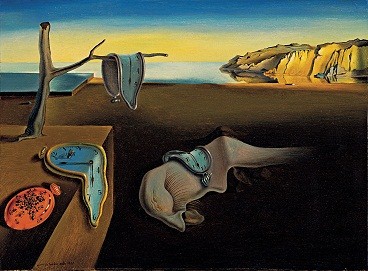Art and Practice as Clarity
“The progression of a painter’s work [should be] toward clarity; toward the elimination of all obstacles between the painter and the idea, and between the idea and the observer… to achieve this clarity is, inevitably, to be understood.” - Mark Rothko.
This quote came across my desk today and made me think, “This! This is what I strive for.” I think that as artists, we are always striving for some type of clarity.
There are various types of clarity, and as an artist, I think it's important to know them so as to use them more effectively. In looking back on my own work, I can see these different types, and even multiples layers of types, in various work I have done.
Defining Clarity
Merriam-Webster defines clarity as: the quality or state of being clear : lucidity.
Dictionary.com defines it as: clearness or lucidity as to perception or understanding; freedom from indistinctness or ambiguity.
All artists would seem to want their work understood, so clarity of some type is important. But there are different types of clarity in art, as each artist may present a different type of clarity in a given work, and art is very subjective to each person experiencing it.
1) Objective Clarity would be a type of clarity that is factual. It is very clear what the work represents. There are no hidden meanings, puzzles, abstractions.
2) Intellectual Clarity is more thinking than feeling. Like Objective Clarity it is factual, but often it uses references to real world facts or events.
3) Visceral Clarity is more of a feeling clarity, something that you “feel in your bones” and connect to on a more emotional, instinctive level.
4) Archetypal Clarity makes free use of various archetypes that are easily recognized.
5) Mystic Clarity is having clues or hidden meanings in the work that only certain people will understand.
An artist who understood all of these types of clarity would be Salvador Dali. His works were full of multiple meanings and references. You could access and understand them on different levels. One of his most famous paintings is, The persistence of Memory. Click on the link below, and then click explore to find out more about the meaning of various objects in Dali's painting.
Achieving Clarity
As an artist, how does your practice infuse clarity into your work?
Do you strive to both refine and define what you do, or do you leave things deliberately ambiguous?
How important is clarity in both yourself, and your work, relating to your audience?
These are important questions to ask yourself, especially if you want to connect with your audience. In your practice, it's important to clearly define to yourself what your approach, and what the ultimate goal of your work, is.
~ MB




Comments
Post a Comment